When I was considerably younger and living approximately 2,000 miles east of my current Montana address, I had an experience that helped shape my ongoing fly fishing journey in ways I couldn’t really appreciate at the time.
I used to fish the East Branch of the Croton on a regular basis. The East Branch rushed out of New York’s East Branch Reservoir and flowed under the I-684/Rte. 22 junction before wandering into the woods below the Sodom Lane bridge. (Or maybe it was the Gomorrah Lane bridge. It’s been more than 30 years, and those two names seem inextricably linked in my head …)
In any case, the bridge offered excellent access to the cold, clear waters of the East Branch, and it wasn’t unusual to find a half dozen or more cars parked on either side of the road when the fish were biting. Most of the cars had New York plates, although I’d occasionally notice a vehicle from Connecticut or even New Jersey.
(As an aside, I was always amazed by the sheer number of people who drove all the way up from New York City to fish the Croton. Who knew there were so many fly fishers in the Big Apple?)
The bridge where Sodom Lane crossed the East Branch served as something of a natural dividing line. I preferred the water downstream, as it flowed through a relatively thick forest and sported a handful of interesting runs and pools.
For reasons I never quite understood, though, the vast majority of anglers fished upstream of the bridge. Upstream was wider, and straighter, and far more urban. Water frequently spilled over the elevated lip of the East Branch Reservoir and ran down a concrete raceway before sliding under the towering bridges where I-684 merged into Rte 22. It was city fishing, or as close to city fishing as I could countenance, and the only saving grace was that there were typically trout eating on the surface if the bugs were coming off.
If you can imagine a trout stream running straight down New York City’s 6th Avenue — the infamous “Avenue of the Americas” — you'll have a good feel for how I viewed the East Branch upstream of the bridge.
I can’t for the life of me remember why I chose to fish upstream one foggy April afternoon — it wasn’t my normal m.o. — but I do remember that there were fish rising above the bridge and not many other fly fishers in the area. Which made my choice seemed perfectly acceptable.
Until it wasn’t.
I’m not quite sure how it happened, but suddenly, as the bugs hatched and the trout rose, a horde of anglers appeared out of nowhere. A crowd materialized out of the upstream mist, and another crowd materialized downstream, and it eventually felt like the bowels of New York City had been magically transported an hour or so north to my exact location on the East Branch.
One fellow actually got close enough that I could have tapped him on the head with my 8’ Orvis Superfine fly rod. Without, I should add, moving an inch. He was an older man wearing a khaki-colored fly fishing vest and an old, floppy fishing hat, and when I pointed out that he was standing far too close, he told me in his unmistakable New York accent that I should take a hike. He was going to fish wherever he wanted, and there was nothing I could do about it.
I will admit that I gave some thought to holding his head under water for a minute or two in the hope that he might see the error of his ways. I dismissed the idea, though, as it was unlikely to elicit the desired outcome. New Yorkers, as you may have heard, take a certain pride in being thick-headed …
Plus, I didn’t want to spend the night in jail.
A couple minutes later, after it became obvious that the situation was unlikely to improve, I reeled in, waded to the bank, and walked back to my rig. Fly fishing had ceased to be fun — and once it’s no longer fun, it’s time to call it a day. Which is exactly what I did.
So how, you might be wondering, did that one experience color my fly fishing for the next thirty-odd years?
You might find this strange, but after that unwholesome experience on the East Branch I began to realize that fly fishing with a mere handful of other anglers around didn’t bother me all that much. I guess you could say that I’d been de-sensitized. And since crowds here in the West almost never come close to that long-ago day in New York, a busy day on the Henry’s Fork or the Missouri just doesn’t seem all that bad.
Now don’t get me wrong. I love solitude, along with peace & quiet, as much as the next guy — in fact, probably more than the next guy — and I truly do enjoy fishing where the towering mountains and the forest primeval are my only companions. Nature in the raw is a balm for the soul, and it contributes to my sanity far more than you’ll ever know. But it’s not a prerequisite for my fishing.
Which is probably why I uncovered a little-known secret about crowded water a while back. Unless they’re wading on redds or otherwise trashing the local environment, most fly fishers have no discernible impact on the water around them. And that’s especially true on our busiest rivers.
Trout have to eat. That’s a fact of life. They have to eat whether there are osprey flying overhead, or otters rollicking in their general vicinity, or larger, more predatory fish waiting in ambush, or anglers wading and casting. They can’t consistently skip dinner; not if they want to survive.
What the fish have learned, and what I eventually learned as well, is that they’re no more at risk from most fly fishers than they would be from a cow wandering around in the river.
Trout on busy stretches of popular rivers don’t really care if there are fisherman wading hither and yon. In fact, many of them don’t even care if you splash around a bit as you wade.
I’ll give you an example. Ten years ago we were shooting a video on Montana’s Missouri River. Rather than catching the plentiful local trout, though, we focused on doing everything wrong. And for the climax of the video, I spun around, feigned stubbing my toe on an underwater rock, and cork-screwed into the river in a reasonably accurate imitation of a little kid doing a belly flop in the backyard pool.
Perhaps I could have made a bigger splash in the quiet, shallow waters of the Missouri river … but maybe not.
Now I knew long before this particular event that trout — and especially trout that are pressured regularly — are remarkably forgiving in certain situations. But when I watched the footage of me flailing around in that cold, clear water, I saw something I never expected. As I was floundering around like a drunken grizzly bear in water that barely reached my thighs, two fish rose next to me — one upstream, and one down. And the furthest might have been 15 feet away from where I was splashing up a storm.
So what’s the lesson? Unless you’ve somehow inserted yourself into a literal mob of anglers, don’t be too concerned by the number of folks in your general vicinity. Most fishermen don’t impact the river any more than a deer or a cow would.
Which isn’t to say you won’t run across spooky fish, or that you can dispense with wading like a stalking heron. You will, and you should not. But rolling up to the river and seeing a handful of anglers is not always the worst thing in the world. As long as you have a little room to wander — and assuming no one decides to fish a rod’s length away — you should be just fine.

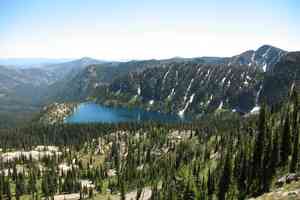



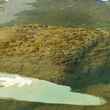
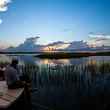
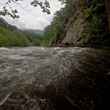
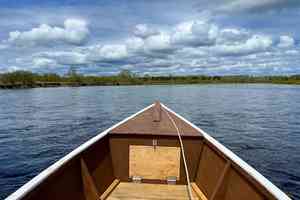
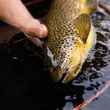

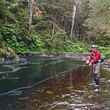
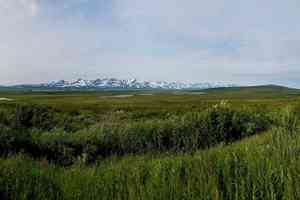
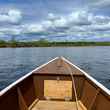




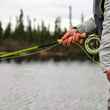

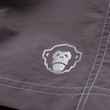

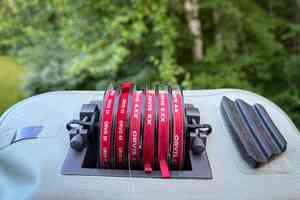
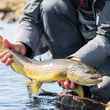
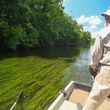

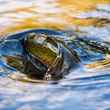
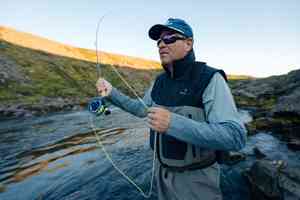
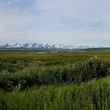



Comments
Tom Connor replied on Permalink
Etiquette is really at a low point, and on the Farmington River in CT, abysmal. However, with 50 years of angling experience, the notional 10% of anglers catch 90% of the fish is
valid. Most sports use short leaders, larger flies, heavier weight lines and do not work the water by seeking new lies. They park and stay put. Their dominance of a stretch forces fishing elsewhere and those discoveries are huge. That said, I like moving structured water. On the above river, there’s less than others.
Most anglers fish pools. They can keep them.
Fred Nimely replied on Permalink
I'm glad you didn't hold the man's head under water, lol. Having manners and being courteous is a virtue everyone should have when they're around others.
Chris replied on Permalink
As someone that lives in western Montana and loves fly fishing I really don’t agree with the east way to dismiss another import or touron. The people moving in and visiting have no common sense or common courtesy at all. If there is plenty of river than why must they crowd another fisherman. If he or she is catching fish than good for them move to another area and figure out what the fish want. Respectfully a irritated local
David Dempsey replied on Permalink
Given the lack of skills readily apparent, the fish generally aren't bothered by hordes of anglers. The bugs and the weed beds are; trampled underfoot and torn up by careless waders. ...and then there are the collapsed stream banks. Case study: California's not quite so pristine Hat Creek--where dead trout drift downstream of the Powerhouse after being overplayed and carelessly released (another topic for another day)
Afraid to put a bend in your rod? Casting so pathetic that you find yourself wading out into the channel? Do the resource and your fellow anglers a favor and find a less pressured and not so fragile body of water to flail about in!
BJMoose replied on Permalink
The solution here is very simple, when you see that there is someone fishing where you wanted to fish - go someplace else. That is the rule among us here in Montana and the main reason I can't fish the Missouri except during the shoulder season. The hordes of anglers with no sense have ruined it for me and many others.
Pages